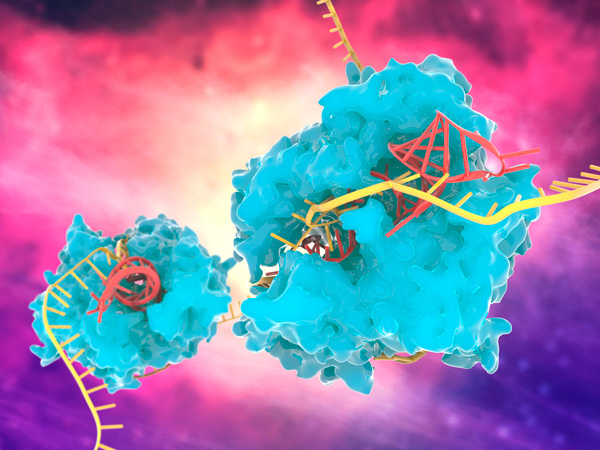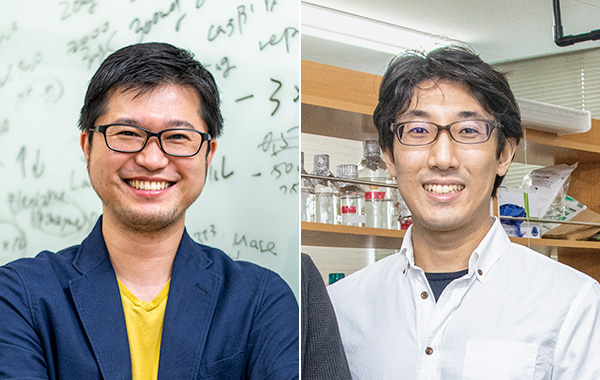
Figure 1: The molecular structure of a CRISPR-Cas13 gene-editing complex (cyan). RIKEN researchers have used CRISPR-Cas13 to develop a highly accurate method for silencing genes. © RAMON ANDRADE 3DCIENCIA/SCIENCE PHOTO LIBRARY et al.
RIKEN researchers have developed a highly accurate method for temporarily silencing genes that is promising for advancing biological research and developing new therapies for genetic diseases1.
Gene silencing allows researchers to see what happens when they temporarily turn off specific genes in the genome. It also holds great promise for treating genetic diseases by silencing problematic genes.
Unlike gene knockout and gene therapy, gene silencing doesn't involve tinkering with the genetic information stored in DNA; rather it makes changes to the RNA that has been copied from DNA. This makes the changes reversible, which is very attractive for both research and therapy.
The two main methods currently used to silence genes both suffer from problems with specificity: RNA interference can make edits to non-targeted sections of RNA, while CRISPR-Cas13 (not to be confused with the gene-editing technique CRISPR-Cas9 that edits DNA) can chop up RNA molecules in the vicinity of the target RNA.
Now, Shintaro Iwasaki and Yuichi Shichino, both of RIKEN RNA Systems Biochemistry Laboratory, and their co-workers have developed a gene-silencing technique for mammalian cells that is highly specific, making just the desired edits to RNA. They dubbed the method 'CRISPRδ'.
Like CRISPR-Cas13, CRISPRδ deploys the enzyme Cas13 to the targeted region of RNA. But unlike CRISPR-Cas13, CRISPRδ employs a catalytically inactive form of Cas13, which instead of slicing the RNA acts as a roadblock when ribosomes try to make proteins by reading the section of RNA. This strategy avoids collateral damage to nearby strands of RNA.
The team analyzed the results of their gene-silencing method and found that it had an ultrahigh specificity, hardly making any changes to non-targeted RNA. "The results were very encouraging, showing that our strategy worked," says Iwasaki. "They indicated that CRISPRδ is more specific than other gene-silencing methods."
Iwasaki is excited about the potential of CRISPRδ to advance genetic research. "CRISPRδ is a valuable step toward developing a toolbox for reliable gene silencing," he says. "Such a toolbox will greatly help to clarify the functions of different genes."
The high accuracy of the method also makes it attractive for developing therapies for genetic diseases. "We expect that CRISPRδ will be able to provide more-specific treatments that produce fewer side-effects for viral infections and neurodegenerative diseases," says Shichino.
While the method is highly specific, it isn't as efficient as RNA interference, and so the team is now exploring ways to enhance its efficiency.

Shintaro Iwasaki (left) and Yuichi Shichino (right) have developed a technique for silencing genes in mammalian cells with an ultrahigh specificity. © 2024 RIKEN






